NASS Branch Physiotherapists Education Session Trial
On 24th November NASS and AStretch ran our first online education session for Branch Physiotherapists. It was attended by physios across the UK, from Dingwall to Taunton. In the session, we discussed Top Tips on Running a NASS group. Heather looked at the research into exercise for ax SpA, NICE guidelines and what potential exercises make up a NASS session. Marie Therese discussed the importance of building a group community as well as looking at the challenges of group work. We also discussed practical tips for running sessions in gyms and virtually. We hope to run these sessions every 6 months to provide support for physiotherapists running NASS groups. It should be an opportunity to allow people to discuss any problems or issues they are having as well as sharing ideas on what has worked well. If you would like to get involved, please contact sally@nass.co.uk.
Please click here for the full powerpoint presentation  
Heather Marie Therese
Zoom Exercise Classes and Adherence
January 2021: January is normally a time to start afresh, set resolutions, goals and aspirations for the year ahead. As physios we motivate and encourage people who come to see us to exercise regularly. EULAR guidelines state: ‘Patients should be educated about axSpA and encouraged to exercise on a regular basis and stop smoking; physical therapy should be considered’. (van der Heijde et al., 2017). Physiotherapists provide people with axSpA with structured exercise programmes with the aim of improving spinal mobility, pain, cardiovascular function and quality of life. The difficulty is that for the exercise programmes to be successful people need to participate in these.
Adherence is defined as the extent to which a person’s behaviour corresponds with the recommendations from a health care professional (WHO., 2003). This term adherence takes into account that people have a choice about whether they act on any recommendations. The term compliance has been used to describe the extent a person’s behaviour corresponds to HCP recommendations, however, compliance implies that an individual does not have a choice (Taube, 2016).
Just like new year’s resolutions for everyone, sticking to an exercise programme can be difficult. Whether a person adheres or not to the recommendations from their HCP can depend on a number of factors. One approach when studying adherence, is to consider that adherence is determined by the interplay of factors relating to five constructs; socioeconomic, healthcare, condition, treatment and patient related (WHO., 2003). This approach can be used to study factors within these dimensions to any regime for example taking medicine appropriately, unhealthy diet and insufficient levels of physical activity/exercise. 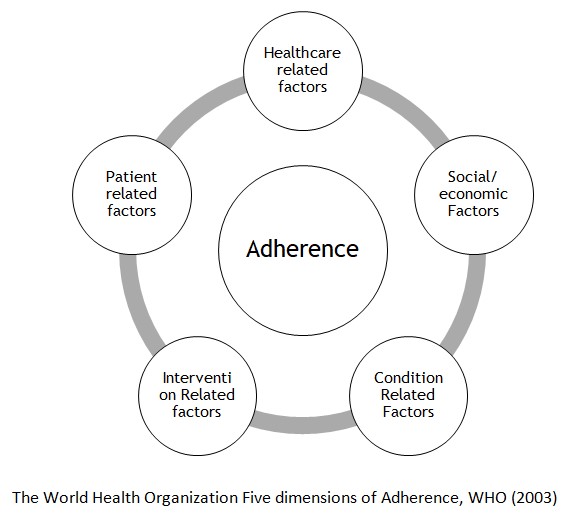
January is here once again bringing with her snow, gale force winds, but this year there is also a new strain of covid, anxiety for the future, a new lock down, home-schooling for some, carers responsibilities for others. It’s possibly even harder for everyone to be motivated to move and follow exercise programmes. Even the new year’s resolutions by Judy Murray fell by the wayside as she signed up for dry Jan and announced on twitter: ‘My dry January lasted 8 days. An outstanding effort in the circumstance’ So what can physiotherapists do to help? As there are numerous factors within each dimension of adherence, physiotherapists should first concentrate on those factors which we can change, interventions are one such area. Providing group exercise and support in groups is one approach suggested to aid adherence. Face to face group exercise in covid circumstances is difficult as the risks of covid mean minimising non-essential contact such as exercise groups. The Gartnavel National Axial Spondylarthritis Society (NASS) group moved their weekly exercise class onto ZOOM. For some members they did not have the internet or the equipment or the computer skills to adopt this new method. We miss those members and it highlights that this one method of delivery is not suitable for all, but we also gained other members who could not afford as much time away from families but half an hour in the other room was achievable. As the instructor I have learned the new skill of how to take these classes. I was grateful for hints from other groups such as log on a little later so the members have time to chat recognising the importance of social support in aiding adherence and mental health. Another good tip was to make sure to have lots of room to exercise – the first class I took I was stuck in a corner and the stretches were not successful. Also try to give a list of equipment such as chair to hold onto ahead of the session, and of course the mistake we have all made at one point - remember to unmute your mic! On the whole these classes have worked well and it’s been great that we have been able to adapt these and continue, with good attendance each week. The very nature of Zoom means that travel is not an issue so for people where there are no local NASS classes this is no longer a barrier. In between NASS classes getting in a routine and trying exercise most days is important, and recognising that this can be difficult especially at the present, is necessary. Support can help people continue their exercises, so checking in with a neighbour, family member or friend or collectively setting step goals. And if anyone falls away from an exercise programme just like Judy Murray and her dry January then it’s simply time to try again. References: Taube, K.M., 2016. Patient–doctor relationship in dermatology: from compliance to concordance. Acta Dermato-Venereologica , 96 (217), pp.25-29. van der Heijde, D., Ramiro, S., Landewé, R., Baraliakos, X., Van den Bosch, F., Sepriano, A., Regel, A., Ciurea, A., Dagfinrud, H., Dougados, M. and van Gaalen, F., 2017. 2016 update of the ASAS-EULAR management recommendations for axial spondyloarthritis. Annals of the rheumatic diseases , 76 (6), pp.978-991. World Health Organization, 2003. Adherence to long-term therapies: evidence for action . World Health Organization.

Marie Therese
Creating the RNHRD’s Virtual AxSpA Self-Management Programme
A guest blog from Emily Graham and Vicky Lewis-Baldy, physiotherapists at the Royal National Hospital for Rheumatic Diseases
December 2020: How to review a year that has been overtaken by a global pandemic?
In September 2019 we moved from our beloved Mineral Hospital in Bath to our new purpose-built Brownsword Therapies Centre on the Royal United Hospital site. Our AxSpA course continued with patients enjoying access to the new state-of-the-art hydrotherapy pool. Then suddenly, as with the rest of the UK, our services came head to head with COVID-19. Our outpatient clinics closed and we were redeployed to work frontline on the wards. It was a really tough time for us in many ways, especially feeling we were abandoning our Rheumatology patients.
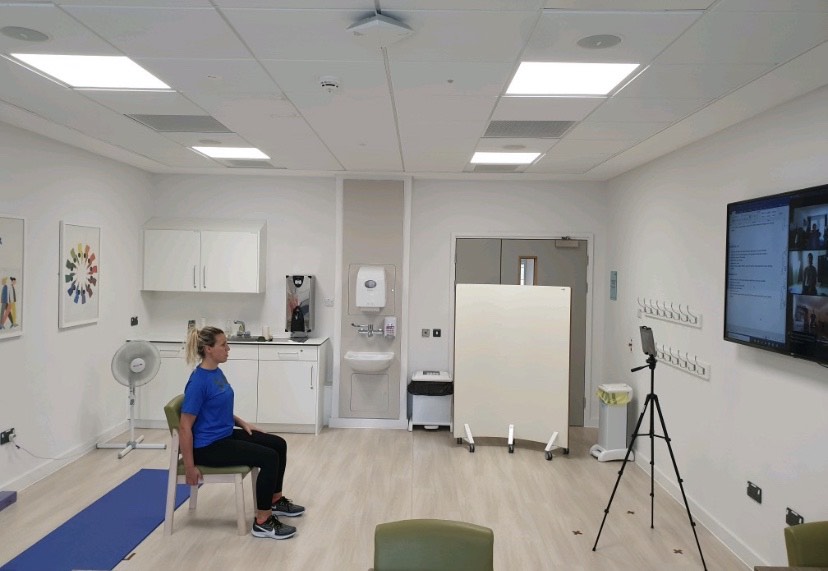 After just over three months, we were able to start to think about resurrecting our services, and discussions began about how we could specifically support our AxSpA patients. Our lead consultant, Dr Raj Sengupta, tasked us with finding a way to make the AxSpA course work online. Cue four months of very hard but rewarding work! To kick off the process we were very fortunate to have the support of our lovely colleagues Mel and Fran at the Bath Institute for Rheumatic Diseases who facilitated patient engagement sessions. These helped us to ensure we were covering the topics that were most important to our patients, as well as considering the optimal length of sessions, and available technology. We reviewed the previous course contents to ensure we were using the most up to date evidence. We met individually with each member of our multi-disciplinary team: our clinical nurse specialists, podiatrist, nutritionist, research nurses, occupational therapists, consultants and psychologist – to look at how they could best contribute to a virtual course. We deliberated over the course timetable – we wanted to ensure a good mixture of education and exercise sessions, and limit prolonged screen time. We worked hard to create a variety of content – including live sessions, pre-recorded presentations and a new participant workbook. We also created exercise and stretches videos to allow people to watch and follow at home. Finally, we needed to put it to the test! We were very fortunate to recruit four fantastic participants for our pilot course. They were brilliant: patient, engaged and generous with their feedback. One of our greatest challenges has been how to assess patients virtually, in place of the normal face to face BASMI measures. We are currently trialling a visual representation of the core BASMI measurements taken pre and post-course, and using additional functional outcome measures. We have enjoyed reading the recent AStretch blog reporting testing of the Home-BASMI and seeing how others are tackling this issue. We also continue to work with our University of Bath colleagues who are exploring the digital measuring of spinal movements. We have enjoyed really good feedback from participants, and our Trust Chief Executive, Cara Charles-Barks, recently awarded us Team of The Month (see below)
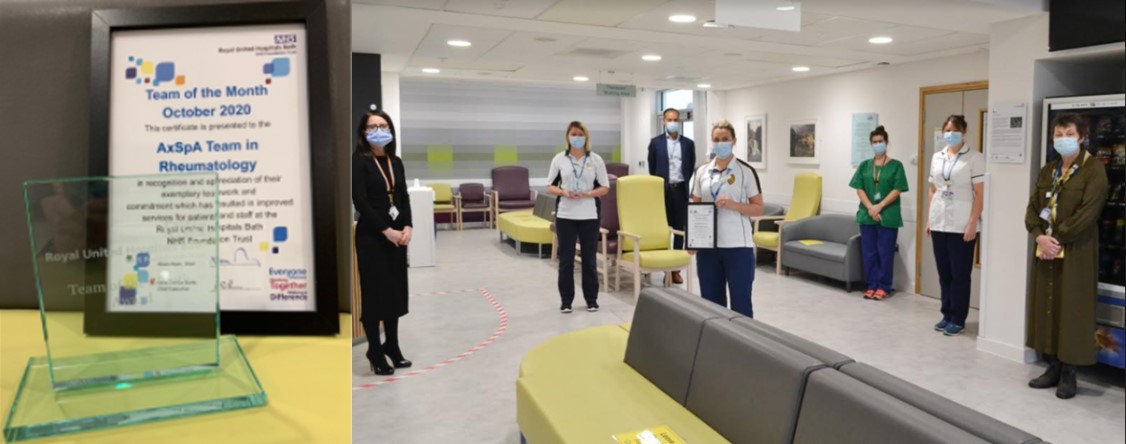 We do really miss our face to face patient contact, and of course the luxury of daily hydro sessions! There are, however, plenty of positives to take from our new arrangements – participants don’t need to travel (easier to balance with home life plus greener and cheaper) - they can easily reproduce all the exercise sessions at home– and we get to see the odd pet on screen! It has been a huge learning experience for us all – and the course is ever-evolving. We are enjoying sharing our experience with other teams as they transition their content online. 2020 has definitely been a year most of us would choose to forget, but for our AxSpA patients COVID-19 has really proved necessity is the mother of creation – and we are proud to take our course forward into the future. We would like to take this opportunity to thank everyone that helped us with the process. For more information please visit our website: https://www.ruh.nhs.uk/AxSpAService
Emily Graham and Vicky Lewis-Baldy
Zoom NASS sessions, the new world during Lockdown!
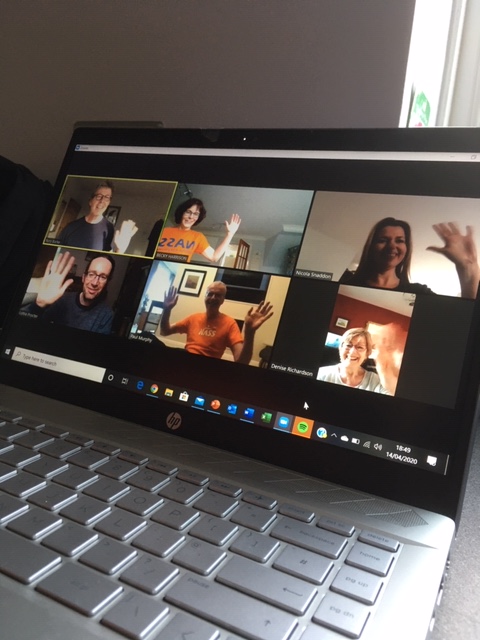 May 2020: Last year I did a blog about running a NASS group for 20 years. At that point I thought our group had tried a good variety of different exercises, mat work, Pilates, Nordic working, even rounders to name a few. However, recent weeks have seen such dramatic changes to our way of life, that I would never have predicted our sessions would have gone virtual.When NASS advised group sessions to stop on 16th March, I emailed the group links to the NASS YouTube clips, ‘Back to Action’ and any other appropriate exercise. However, this didn’t really seem enough. Not being a natural ‘techi’ I was trying to work out if I could email video clips of myself doing exercises, when one of our group said his daughter had been doing dance lessons via Zoom (Yorkshire Rose Academy of Dance) and could we use it for our sessions. The rest of the group were really keen to try and we did our first session on 7th April. It has been lovely to keep in touch with the members and see that everyone is managing ok. Most of the members are self-isolating and have found keeping in touch with each other really helpful. We have kept the day and time the same as our normal sessions to try to keep some normality at this strange time.
Some quotes from our members: ‘really good to be part of the group again. Look forward to it each week. Something to focus on as well as a good reminder to keep up the exercises’ ‘I’m very happy to do Zoom, it keeps us together as a group and focused. Just have to manage the technology’ ‘the 2 things no pre-recorded can replicate. They provide personalised, appropriate exercise from physios who knew us all as individuals. And they enable a degree of mutual interaction which has never been more important in terms of maintaining morale’ ‘Really good to keep in touch with the group during lock-down and still benefit from exercising together’
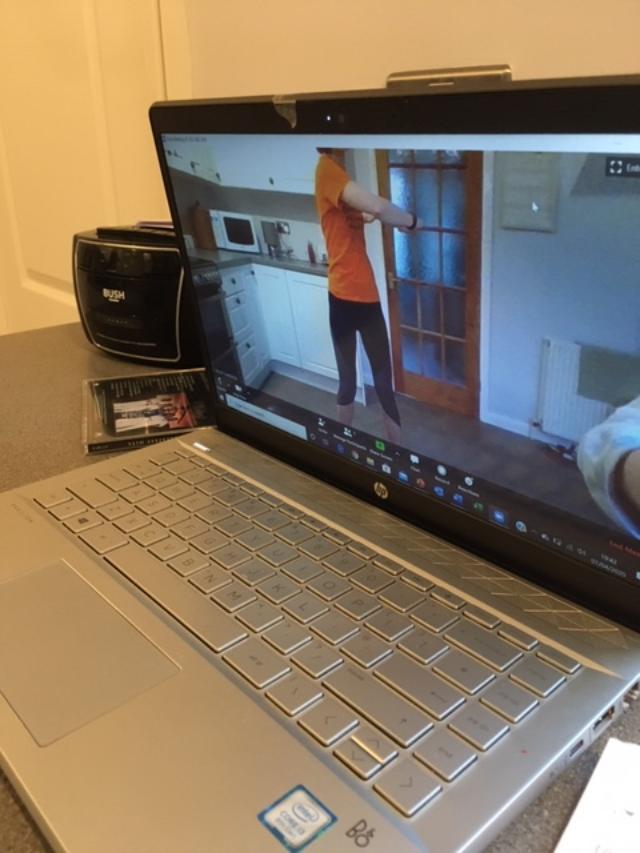 I would recommend if you run a NASS group to suggest virtual sessions to your members. It is easy to download the App and set up a meeting. Members can be easily talked through how to do it and don’t need to be technically minded. It allows members to keep in touch and exercise which is so valuable at this most unusual of times. 
Heather
|